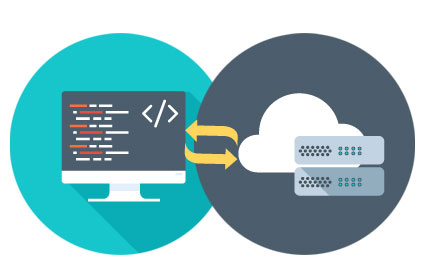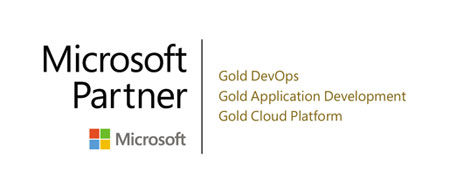DevOps
Let our Cloud Services team help you build a DevOps culture for your organization today
Let our Cloud Services team help you build a DevOps culture for your organization today
 DevOps is the collaboration between development and operations teams to streamline and automate the processes involved in releasing software code to production. DevOps can significantly reduce the overhead in software release management and ultimately provides value to the organization faster and more frequently. It builds quality into each stage of the development process through the use of continuous delivery practices all while reducing delivery time. To work effectively, DevOps generally requires a significant culture change and involves buy-in from multiple organizational departments, but the overall value it brings is well worth the effort.
DevOps is the collaboration between development and operations teams to streamline and automate the processes involved in releasing software code to production. DevOps can significantly reduce the overhead in software release management and ultimately provides value to the organization faster and more frequently. It builds quality into each stage of the development process through the use of continuous delivery practices all while reducing delivery time. To work effectively, DevOps generally requires a significant culture change and involves buy-in from multiple organizational departments, but the overall value it brings is well worth the effort.
Whether you are a software development company that supports external customers, or an internal IT team that supports enterprise applications, DevOps can go a long way in driving value and satisfaction with your customer base. Fewer code defects, faster response times and more frequent functionality releases are all value adds for customers. DevOps is also known to drive higher team engagement and job satisfaction through collaboration and work efficiency.
Infrastructure as Code is the automated deployment of data center infrastructure components such as networks, virtual machines and load balancers through the use of configuration languages that allow for flawless deployment and repeatability. Automated infrastructure deployment can be initiated upon request and coupled with application deployment to build an entire application platform environment from the ground up on demand. You only use resources when needed and bring a new environment up reliably and repeatedly when you are ready for it. This is particularly effective for supporting multiple environments for development, test and staging.
 Continuous Integration / Continuous Delivery (CI/CD) / Continuous Deployment
Continuous Integration / Continuous Delivery (CI/CD) / Continuous DeploymentContinuous Integration is the complete automation of building and testing code. When code is committed by a developer, the changes are validated and merged to the master branch and immediately packaged in a build artifact. Continuous delivery is the automated deployment of a new build artifact when they are available. When you effectively implement Continuous Integration and Continuous Delivery (CI/CD) in a completely automated fashion, you have achieved Continuous Deployment which is the highest and most efficient level of DevOps. Continuous Deployment is the ultimate goal for most development organizations today.
Continuous testing and monitoring are critical components to the DevOps process. Continuous testing requires the use of automated testing tools, and the goal of Continuous testing is to evaluate the quality of software at every step of the delivery process which requires a heavy reliance on automated unit testing. Continuous monitoring involves monitoring of all processes through each phase of your DevOps lifecycle. It helps to ensure the health, performance, and reliability of your application and infrastructure as it moves from development to production and immediately raises awareness when issues occur.
The Provato Group aligns the DevOps expertise and experience with your unique organizational needs to ensure that your team not only has the processes in place, but the knowledge to keep them going. DevOps culture is a journey, and our team will help you find the right path to success.
Let’s discuss your goals and start you on your path to DevOps efficiency.